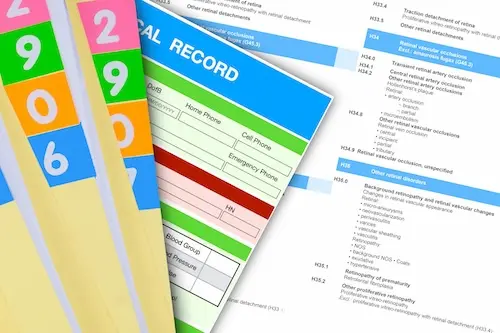Understanding Pain and Suffering Damages in Personal Injury Cases
If you’ve been involved in an accident, you may be wondering what kind of compensation you can seek for your physical and emotional injuries. One type of compensation you may be entitled to is pain and suffering damages.
In personal injury claims and lawsuits, pain and suffering is a critical part of the damages calculation. If you’re considering pursuing a claim, it’s important to understand how pain and suffering damages work, and the role they play in a personal injury case. To fully understand your options and the potential value of your case, you should consult with a car accident lawyer. They can provide guidance specific to your situation.
What Are Pain and Suffering Damages?
Pain and suffering damages are a form of non-economic compensation awarded to victims who have experienced physical discomfort, emotional distress, or mental anguish due to an injury. These damages are meant to compensate the victim for the suffering they endure beyond tangible losses, such as medical bills and lost wages.
Unlike economic damages, which can be easily calculated based on financial losses like medical expenses or lost income, pain and suffering damages are more subjective. They represent the intangible pain that victims go through as a result of their injuries.
The Different Types of Pain and Suffering
Pain and suffering can include both physical pain and emotional distress. Here’s a breakdown of the two main categories:
- Physical Pain: This includes the discomfort, pain, and suffering caused by physical injuries. The severity of the injury, the recovery time, and the ongoing discomfort all play a role in the amount of compensation.
- Emotional Distress: This refers to the psychological impact of an injury, including mental pain, emotional anguish, and mental distress. It can be related to things like anxiety, depression, or the inability to enjoy life as before the accident.
Pain and suffering compensation can also cover mental anguish, including trauma or distress that affects the victim’s daily life, social relationships, or work. The victim’s inability to return to their previous lifestyle and enjoy the activities they once did can also contribute to the calculation of these damages.
How Are Pain and Suffering Damages Calculated?
Calculating pain and suffering damages is not straightforward because it involves subjective factors. There is no fixed formula, but there are commonly used methods to estimate these damages.
The Multiplier Method
The multiplier method is one of the most common ways to calculate pain and suffering damages. This method involves multiplying the total economic damages (such as medical bills and lost wages) by a specific number, typically between 1.5 and 5, depending on the severity of the injury and other factors.
- Lower multipliers are used for less severe injuries.
- Higher multipliers are used for more severe injuries, longer recovery times, and significant emotional pain.
For example, if your total economic damages are $20,000 and the multiplier is 3, your pain and suffering damages would be $60,000.
The Per Diem Method
The per diem method involves assigning a specific dollar value for each day that the victim suffers from the injury. The calculation is based on the severity of the pain and the victim’s life before and after the injury.
In this method, the plaintiff (victim) is assigned a daily rate for their pain and suffering. This could range from a low amount to a significant figure depending on the injury’s impact. This daily rate is then multiplied by the number of days the injury will affect the victim’s life or recovery time.
Factors That Affect Pain and Suffering Compensation
Several factors play a role in determining the amount of pain and suffering compensation a victim may be entitled to. These include:
- Severity of Injuries: The more severe the injuries, the higher the potential compensation. Severe injuries, particularly those that lead to long-term consequences or permanent disability, typically result in higher damages.
- Recovery Time: Longer recovery times or future medical expenses increase the likelihood of higher compensation. Injuries that require long-term medical treatment or ongoing therapy will be valued higher.
- Victim’s Life Before the Accident: If the injury has significantly affected the victim’s ability to participate in daily life or engage in activities they enjoyed before the accident, this will be taken into consideration.
- Medical Evidence: Medical bills, medical records, and testimony from a medical expert will be used as evidence provided to prove the extent of the injuries. This helps establish the severity of the pain and suffering.
- Emotional Impact: The emotional pain and suffering resulting from the injury, such as emotional distress or mental anguish, will also be evaluated. Victims who suffer from PTSD, depression, or anxiety as a result of the accident can claim additional damages for emotional distress.
- Insurance Company’s Position: The amount an insurance company is willing to pay for pain and suffering damages will depend on how much they believe is reasonable based on the evidence presented.
Proving Pain and Suffering
Proving pain and suffering is often more challenging than proving economic damages, as it’s harder to quantify. To successfully prove pain and suffering, you may need to gather evidence such as:
- Pain Journal: Keeping a pain journal where you document your physical discomfort, emotional pain, and any effects on your daily life can help substantiate your claim.
- Witness Testimony: Statements from family members, friends, or coworkers who have seen the changes in your life due to the injury can provide important evidence.
- Medical Records: Your healthcare providers’ records will be crucial in proving the extent of the injury and its impact on your life. They can also help show your recovery time and the long-term effects of your injury.
- Expert Testimony: A medical expert can testify about the likely long-term effects of your injury, as well as its emotional and psychological impact.
Non-Economic Damages vs. Economic Damages
Pain and suffering damages fall under the category of non-economic damages, which are more subjective and harder to calculate than economic damages. While economic damages are based on measurable financial losses (like medical expenses or lost wages), non-economic damages compensate for intangible losses.
Examples of Economic Damages:
- Medical Bills: Costs of surgeries, hospital stays, physical therapy, and other treatments.
- Lost Wages: If the injury prevents you from working, you may be entitled to compensation for the wages you’ve lost during recovery.
- Future Medical Expenses: If the injury will require long-term treatment, these costs are also considered.
Examples of Non-Economic Damages:
- Pain and Suffering: Compensation for physical discomfort, mental distress, and emotional anguish caused by the injury.
- Loss of Enjoyment of Life: If the injury impacts your ability to enjoy hobbies, activities, or social events, you may be entitled to compensation for this loss.
How to Maximize Your Pain and Suffering Damages
To ensure that you are compensated fairly for pain and suffering, consider these steps:
- Document Everything: Keep detailed records of your medical treatments, recovery process, and how your injury impacts your daily life.
- Consult a Personal Injury Lawyer: A personal injury lawyer can help you understand the legal process, calculate pain and suffering damages accurately, and negotiate with insurance companies.
- Seek a Medical Expert’s Opinion: A medical expert can strengthen your claim by explaining the long-term effects of your injuries.
- Consider All Aspects of Suffering: Don’t just focus on physical pain—remember to account for emotional pain and mental distress as well.
Take Action Today: Get the Compensation You Deserve
Pain and suffering damages play a crucial role in maximizing the value of your personal injury claim or lawsuit. These damages compensate for the emotional distress, mental anguish, and physical discomfort you experience due to your injuries. However, calculating the appropriate amount can be complicated, and the compensation you receive depends on several factors, including the severity of your injuries and the impact on your life.
If you’ve been injured in an accident, don’t wait any longer to get the justice you deserve. Contact Mogy Law TN today to consult with an experienced personal injury lawyer. We’ll help you navigate the complex legal process, gather the crucial evidence needed, and fight aggressively for the compensation you are entitled to.
Call now (414) 334-5472 for a free consultation and let us guide you through your personal injury case with the expertise and dedication that you need to secure the best possible outcome.







